Königreich beider Sizilien
|
|
|
|
| Übersicht – Contents: | |
Diese Seite ist Teil des Projektes
Königreich beider Sizilien
|
|
|
|
| Übersicht – Contents: | |
Flaggen – Flags: |
|
 |
1816–1860, Nationalflagge – national flag, Quelle/Source, nach/by: Flags of the World |
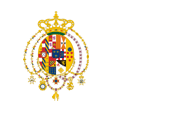 |
1816–1860, Staats- und Handelsflagge – state and merchant flag, Quelle/Source, nach/by: Flags of the World |
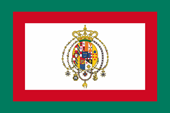 |
1848–1849, Staats- und Handelsflagge – state and merchant flag, Quelle/Source, nach/by: Flags of the World |
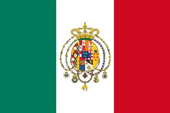 |
1860, Staatsflagge – state flag, Quelle/Source, nach/by: Flags of the World |
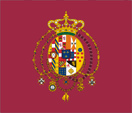 |
1816–1860, Flagge des Königs – flag of the King, Quelle/Source, nach/by: Flags of the World |
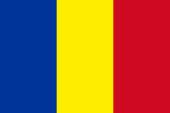 |
1799, das Königreich ist vorübergehend die "Parthenopäische Republik", The Kingdom is momentary the "Parthenopean Republic", Quelle/Source, nach/by: Wikipedia (EN) |
Bedeutung/Ursprung der Flagge – Meaning/Origin of the Flag: |
|
| Die Flaggen des Königreiches zeigten zumeist das Wappen der Bourbonen. Deren Farbe war Weiß. Die Bedeutung der Farbkombination von Blau und Weiß in der Nationalflagge sind ungeklärt. | The flags of the Kingdom showed mostly the coat of arms of the Bourbons. Their colour was white. The meaning or origin of the colour combination of blue and white in the national flag is not cleared. |
| Immerhin ist es möglich, dass die beiden Farben auf die Republik Amalfi zurückgehen, eine der vier größen Seerepubliken, die im Mittelalter durch Handel zu Macht und Blüte gekommen sind. Die Stadt war auch ein Herzogtum im Königreich beider Sizilien und liegt nicht weit von Neapel entfernt. Deren Farben waren Weiß und Blau. | After
all, it is possible that the two colors have their roots the Republic of
Amalfi, one of the four maritime republics, which came in the middle ages to
power and prosperity by trade. The town was even a duchy in the Kingdom of the Two Sicilies, and is placed not far from Naples. Its colors were white and blue. |
| Quelle/Source: Flags of the World, Volker Preuß | |
Wappen – Coat of Arms: |
|
 |
1816–1860, Wappen Königreich beider Sizilien – coat of arms of the Kingdom of Two Sicilies, Quelle/Source, nach/by: Wikipedia (D) |
Bedeutung/Ursprung des Wappens – Meaning/Origin of the Coat of Arms: |
|
| Das reich gegliederte Wappen zeigt die Heraldik der spanischen Bourbonen mit all ihren damals aktuellen Besitzungen, Titeln und Ansprüchen. Entscheidend ist das bourbonische Herzschild mit den drei goldenen Lilien auf Blau. | The
richly structured shield shows the heraldry of the Spanish Bourbons with all
its then current possessions, titles and claims. Decisive is the Bourbon
central shield with the three golden lilies on blue. |
| Quelle/Source: Wikipedia (EN), Volker Preuß | |
|
Historische Staaten in Italien – Historical states in
Italy: ca. 1850–1858 alle Staatsbezeichnungen in Englisch – all state denominations in English |
|
| Landkarte/Map: Volker Preuß |
Zahlen und Fakten – Numbers and Facts: |
|
|
|
|
|
|
|
|
|
|
|
|
|
|
Geschichte: |
|
Antike
· Besiedlung durch Iapygier, Sikuler, Osker und Sabeller, griechische
Kolonisierung 480 v.Chr. · Abwehr einer Kathagischen Invasion auf der Insel Sizilien, jedoch zunehmender Einfluss Karthagos 450 v.Chr. · Gründung von Neapel als griechische Kolonie Neapolis 298 v.Chr. · Neapel wird Bundesgenosse von Rom 264–201 v.Chr. · Erster Punischer Krieg, Sizilien wird römische Provinz 410 n.Chr. · Einfall der Westgoten ab 440 · die Vandalen überfallen die Insel nahezu jährlich 476 · Absetzung des letzten römischen Kaisers Romulus Augustulus, Ende des (West)Römischen Reiches, Neapel gehört bis 493 zum Reich des Odoaker 493 · die Ostgoten besetzen die Insel 544 · Eroberung der Insel Sizilien durch Byzanz (Oströmisches Reich) 568/569 · Langobarden erobern einen großen Teil Süditaliens, und gründen dort das Herzogtum Benevent, Neapel selbst bleibt byzantinisch 774 · Eroberung Norditaliens durch die Franken, das Herzogtum Benevent kommt unter fränkische Oberhoheit, Neapel selbst bleibt byzantinisch 827 · Eroberung von Sizilien durch die Araber, ebenso Eindringen in Kalabrien 888 · Nach dem Aussterben der Karolinger zerfällt das Herzogtum Benevent in mehrere langobardische Fürstentümer 1061–1091 · Eroberung Siziliens durch die Normannen, Bildung des Königreiches Sizilien 1130 · Unteritalien mit den langobardischen Fürstentümern, der Stadt Neapel, und den von den Byzantinern verlassenen normannischen Gebieten werden mit dem normannischen Königreich Sizilien vereinigt 1194 · das Königreich Sizilien kommt an das Haus Hohenstaufen 1266 · das Königreich Sizilien kommt an das Haus Anjou, Neapel wird ständige Hauptstadt des Reiches 1282 · "Sizilianische Vesper" – durch einen Volksaufstand kommt die Insel Sizilien als Königreich an das Haus Aragón, Unteritalien verbleibt als Königreich Sizilien (inoffiziell auch Königreich Neapel) bis 1442 bei Anjou 1442 · Alfons V. von Aragón erobert das Königreich Neapel 1495 · Karl VIII., König von Frankreich, erobert das Königreich Neapel und wird zum König gekrönt 1496 · Ferdinand II., König von Aragón, erobert das Königreich Neapel mit spanischer Hilfe zurück, nach seinem Tod noch im selben Jahr wird sein Onkel Friedrich König 1501–1502 · Krieg Spaniens und Frankreichs gegen Neapel 1503–1504 · Krieg zwischen Frankreich und Spanien um Neapel, das Königreich Neapel wird Spanischer Besitz 1516 · das Königreich Neapel kommt an das Haus Habsburg 1556 · das Königreich Neapel kommt an die spanische Linie des Hauses Habsburg 1701–1714 · Spanischer Erbfolgekrieg 1714 · Friedensvertrag von Utrecht, das Königreich Neapel und das Königreich Sardinien kommen an die österreichischen Habsburger, das Königreich Sizilien kommt an Savoyen-Piemont 1720 · Savoyen-Piemont tauscht mit Österreich Sizilien gegen Sardinien, das Königreich Sizilien kommt somit an das Haus Habsburg (Königreich Neapel-Sizilien) 1734 · das Haus Habsburg überlässt das Königreich Neapel-Sizilien dem Haus der Spanischen Bourbonen 1796 · Italienfeldzug Napoléons, Unteritalien wird 1799 Parthenopäische Republik und 1800 wieder Königreich Neapel, wird jedoch bis 1814 von Napoléons Verwandten regiert, Sizilien bleibt beim Haus Bourbon 1815 · Wiener Kongress, das Königreich Sizilien und das Königreich Neapel kommen an die Spanischen Bourbonen 08.12.1816 · Gründung des Königreichs beider Sizilien unter den spanischen Bourbonen 1860 · Garibaldis Feldzug gegen das Königreich beider Sizilien, der König geht ins Exil, Garibaldi regiert als Diktator 1861 · das Königreich beider Sizilien muss sich dem Königreich Italien anschließen |
History: |
|
Antiquity
· settlement by Iapygiers, Siculians, Oskers and Sabellians, Greek
colonization 480 B.C. · rejection of an Kathagian invasion on Sicily Island, however growing influence of Karthago 450 B.C. · foundation of Naples as Greek colony Neapolis 298 B.C. · Naples becomes an ally of Rome 264–201 B.C. · First Punic War, Sicily becomes a Roman province 410 A.D. · invasion of the Western Goth from 440 · the Vandals infest the island nearly annually 476 · dismissal of the last Roman emperor Romulus Augustulus, end of the (West)Roman Empire, Naples belongs until 493 to the Empire of the Odoaker 493 · the Eastern Goth occupy the island 544 · conquest of Sicily Island by Byzanz (East Roman Empire) 568/569 · the Langobardes capture a large part South Italy, and establish there the Duchy of Benevent, Naples itself remains Byzantian 774 · conquest of Northern Italy by the Franks, the Duchy of Benevent comes under Frankish supremacy, Naples itself remains Byzantian 827 · conquest of Sicily by the Arabs, further invasion in Calabria 888 · after the extinction of the Carolingians disintegrates the Duchy of Benevent into several Langobardian principalities 1130 · Lower Italy with the Langobardian principalities, Naples Town, and the from the Byzantians left Norman territorities get united with the Norman Kingdom of Sicily 1061–1091 · conquest of Sicily by the Normans, establishment of the Kingdom of Sicily 1194 · the Kingdom of Sicily comes to the House of Hohenstaufen 1266 · the Kingdom of Sicily comes to the House of Anjou, Naples becomes perpetual capital of the Empire 1282 · "Sicilian Vespers" – by a uprising comes the Island of Sicily as a kingdom to the House of Aragón, Lower Italy remains as Kingdom of Sicily (unofficial: Kingdom of Naples) until 1442 at Anjou 1495 · Charles VIII., King of France, conqueres the Kingdom of Naples and becomes crowned as king 1496 · Ferdinand II., King of Aragon, conqueres - with Spanish help - the Kingdom of Naples back, after his death in the same year, his uncle Frederick becomes King 1501–1502 · war of Spain and France against Naples 1503–1504 · war between France and Spain to Naples, the Kingdom of Naples becomes a Spanish possession 1516 · the Kingdom of Naples comes to the House Habsburg 1556 · the Kingdom of Naples comes to the Spanish line of the House of Habsburg 1701–1714 · Spanish heritage succession war 1714 · peace treaty of Utrecht, the Kingdom of Naples and the Kingdom of Sardinia come to the House of the Austrian Habsburgs, Kingdom of Sicily comes to Savoy-Piedmont 1720 · the House of Savoy-Piedmont swaps with Austria Sicily in return for Sardinia, the Kingdom of Sicily comes in this way to the House of Habsburg (Kingdom of Naples-Sicily) 1734 · the House of Habsburg leaves the Kingdom of Naples-Sicily to the House of the Spanish Bourbons 1796 · Italy campaign of Napoléon, Lower Italy becomes in 1799 Parthenopeic Republic and in 1800 Kingdom of Naples again, but it is ruled until 1814 by Napoléon's relatives, Sicily remains at the House of Bourbon 1815 · Vienna Congress, the Kingdom Sicily and the Kingdom of Naples come to the Spanish Bourbons 8th of December in 1816 · establish of the Kingdom of Two Sicilies under the Spanish Bourbons 1860 · Garibaldi's campaign against the Kingdom of Two Sicilies, the king exiles, Garibaldi acts as dictator 1861 · the Kingdom of Two Sicilies has to join the Kingdom of Italy |
| Quelle/Source: Meyers Konversationslexikon, Atlas zur Geschichte, Wikipedia (D) |
Ursprung des Landesnamens – Origin of the Country's Name: |
|
| Der Name "Sizilien" geht auf das Volk der Sikuler zurück, das in der Antike auf der Insel lebte. Als zweiten Namen trug die Insel die Bezeichnung "Trinacria", was "Die Dreispitzige" heißt. | The name "Sicily" goes back to the people of the Siculians, which lived on the island in the antiquity times. As a second name the island was called "Trinacria", what menas "The tricuspid". |
| Das Königreich Sizilien, bestehend aus der Insel und dem Festland wurde durch die Sizilianische Vesper 1282 geteilt. Nun gab es zwei Könige von Sizilien. Einer - aus dem Hause Aragón - residierte in auf der Insel, in Palermo, der andere - aus dem Hause Anjou - residierte auf dem Festland, in Neapel. Beide Herrschaften erkannten sich im Frieden von Caltabellota (1302) gegenseitig an, jedoch wurde das Königreich auf der Insel Sizilien "Königreich Trinacria" genannt, und der Titel des Königs von Sizilien verblieb bei dem König in Neapel. Damit gab es eine Insel Sizilien mit einem Königreich darauf, und ein Königreich Sizilien das nicht auf der Insel lag. | The Kingdom of Sicily, consisting of the island and the mainland was divided by the Sicilian Vespers in 1282. Now there were two kings of Sicily. One - from the House of Aragon - resided on the island, in Palermo, the other - from the House of Anjou - resided on the mainland, in Naples. Both dominions recognized each other in the peace treaty of Caltabellota (1302), but the kingdom on the island of Sicily was called "Kingdom of Trinacria", and the title of the King of Sicily remained with the king of Naples. Thus, there was an island of Sicily with a kingdom on it, and a Kingdom of Sicily which existed not on the island. |
| Zur besseren Unterscheidung wurde das Festland-Sizilien in der Praxis "Regno di Sicilia citeriore" genannt, das Insel-Sizilien dagegen "Regno di Sicilia ulteriore"; oder man bezeichnete das Insel-Sizilien als Königreich Sizilien und das Festland-Sizilien als Königreich Neapel. Beide Sizilien wurden zum Wiener Kongress im Jahre 1815 an die Spanischen Bourbonen gegeben, die sie am 08.12.1816 zu einer Krone, dem "Königreich beider Sizilien" vereinigten. | For a
better distinguish the Mainland-Sicily in practice was called "Regno di
Sicilia Citeriore", but the Island-Sicily was called "Regno di Sicilia
ulteriore". Sometimes the Island-Sicily was called as Kingdom of Sicily Mainland-Sicily as Kingdom of Naples. Both Sicilies were handed over to the Spanish Bourbons at the Congress of Vienna in 1815, which unite them on 8th of December in 1816 under one crown, the "Kingdom of the Two Sicilies". |
| Quelle/Source: Handbuch der geographischen Namen | |
| heutige Regionen Italiens – today's regions of Italy: alle Bezeichnungen in Italienisch – all denominations in Italian |
|
| Landkarte/Map: Volker Preuß |